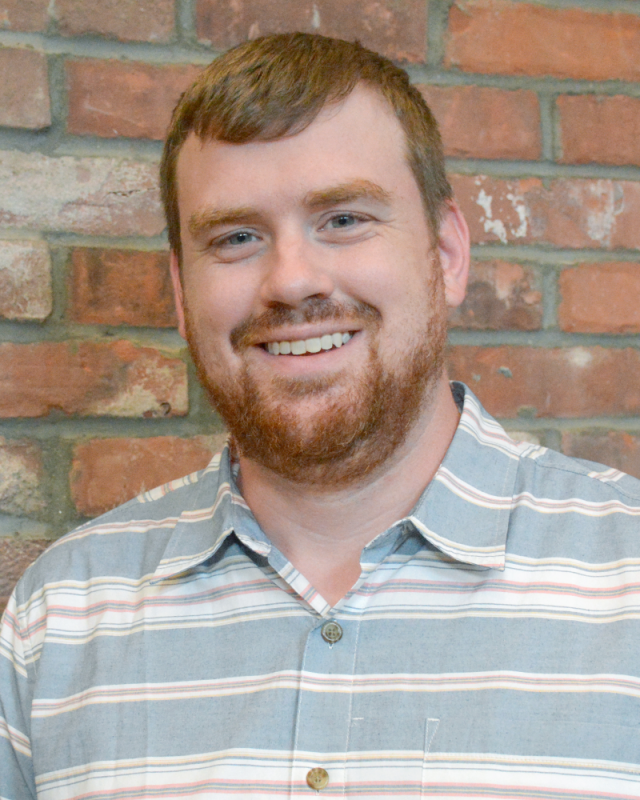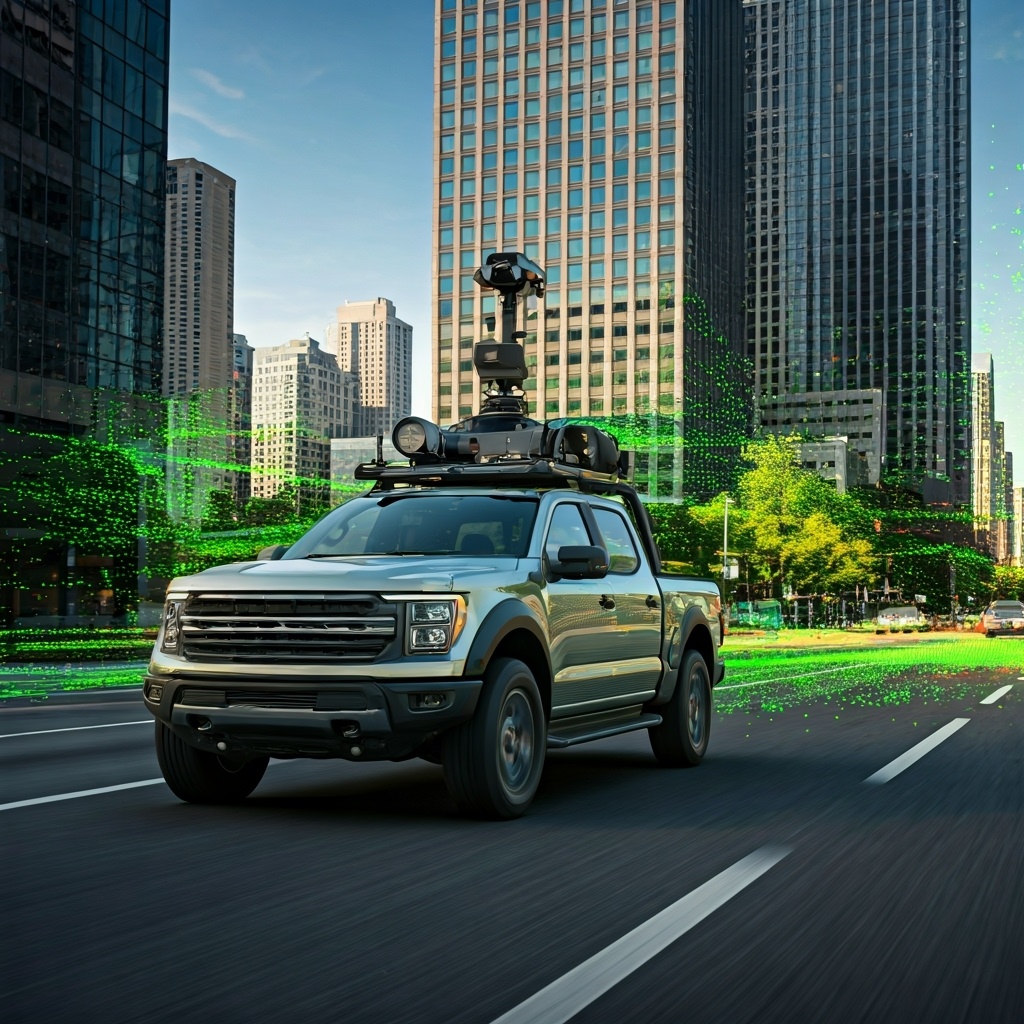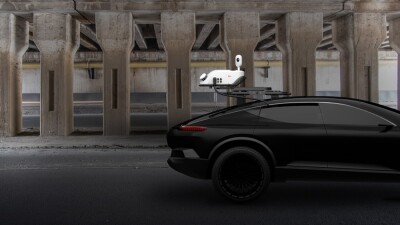As GPS systems first began to emerge for public use in the early 1990s, mobile mapping rigs for surveying followed quickly behind in their nascent stages. There were, to be clear, systems in existence before this period, but the advent of accurate location data from GPS led to more widespread usage, and in many ways started us toward the path to incorporating lidar about a decade later, and to where we are today. Now, mobile mapping is a major piece of many different kinds of projects, with rigs becoming more powerful than ever and easier to use, opening up use cases across different sectors and for different professions.
Recent years have sparked even more innovation and usage for this kind of large-scale mobile mapping technology – think more rigs that are mounted to road and rail vehicles as opposed to handheld systems – for a few key reasons. For one thing, as the idea of autonomous vehicles has rapidly shifted from science fiction to reality, the need for accurate, detailed, and up-to-date maps of our roadways has become imperative. Additionally, infrastructure projects are taking on greater importance, particularly for horizontal projects like highways and rail systems. Throw in the search for more sustainable practices leading to more emphasis on constructing new railways or renovating existing systems, and the need for this ability to quickly and accurately map large spaces is driving more and more usage of mobile mapping.
Today, there are a number of different solutions for mobile systems from some of the biggest names in the geospatial sector. Below, you can find some of the main systems available on the market today, as well as the software that supports the processing and analysis of this data.
Hardware
Trimble MX Series
Unsurprisingly, given their standing in the geospatial industry as a whole, Trimble produces one of the leading mobile mapping series available on the market today with their MX series, which today features four different options.
MX90: This is Trimble’s large-scale mobile mapping option, coming in at 37 kilograms. Able to capture data at highway speeds, this is for large projects within challenging urban and rural environments, producing high-density point clouds with two sensors completing 500 scans per second.
MX60: Trimble’s newest addition to their mobile mapping lineup, the MX60 is their mid-spec option, with three different models – the Core, the Pro, and the Premium – coming in between 24 and 28 kg. The lighter model captures slightly fewer points with 400 scans per second, and they advertise it as being useful for industry veterans and newcomers alike.
MX50: The MX50 comes in at a slightly lighter 23 kg and is slightly smaller in scale and designed for simplicity of use.
MX9: The MX9 is another system for large-scale use cases, but this one is designed to be used for mapping rail projects.
Leica Pegasus TRK Portfolio
Like Trimble, Leica Geosystems, part of Hexagon, offers a few different options under its mobile mapping portfolio, all branded under the Pegasus TRK umbrella. For Leica, there are three different offerings available:
Pegasus TRK100: We’ll start with the TRK100, which is the lightest within the lineup. Designed for simplicity of use, this lightweight scanning system is designed to be used by a one-person operation for easy transport and setup. It features dual scanners as well as GNSS and IMU integration, coming in at 14 kg.
Pegasus TRK Evo: Heading to the other end of the spectrum, the TRK Evo is designed for those who need the highest accuracy and detail for their projects. This comes in the form of either the TRK500 and TRK700, and collects up to 4.4 million points per second, according to Leica. With integrated SLAM, this unit can still georeference in GNSS-denied areas.
Pegasus TRK Neo: The TRK Neo shares a lot of similarities with the TRK Evo, but sacrifices a bit in scanning power – it collects up to four million points per second – for a longer range of 730 meters. Leica calls it out as a powerful system for smart city modeling and environmental modeling, among other use cases.
Pegasus TRK300: Just last month, Leica also introduced a new TRK300 system, which you can read about in their release here. They note it’s available now in select countries ahead of a wider release.
RIEGL VM
Already discussing the offerings of two industry leaders, it should be no surprise that RIEGL joins Leica and Trimble as a key provider of mobile mapping technology. They have a large and diverse set of offerings in this class, including full systems as well as lidar components, which you can see in full here. For the benefit of brevity, though, we’ll concentrate on two of the full systems.
RIEGL VMY-2: This dual scanner mapping system from RIEGL is, in their words, well-suited for a variety of different mobile mapping applications. The system features a pair of miniVUX-Series lidar sensors from the company and includes the optional integration of up to four cameras to enable simultaneous imagery and lidar data acquisition.
RIEGL VMX-2HA: For higher performance, the VMX-2HA is their high-speed, high-performance dual scanning system that can perform two million measurements and 500 scan lines per second. This is for survey-grade mobile mapping applications, and includes two VUX-1HA lidar sensors as well as a high-performance INS/GNSS unit, plus a combination of up to nine different cameras.
Software
As anyone in the geospatial industry knows, any hardware is only as good as the software that will be used to process and analyze the collected data. Given that mobile mapping data is almost always vast, dealing with huge areas and complex scenes, it’s important for today’s software to be able to quickly handle all of this data and streamline the experience for the end users to produce a desired deliverable. A lot of that today means leverage artificial intelligence and machine learning to automate much of the processing and segmentation, which new tools readily meet. Here are a few of those solutions on the market today.
Mach9 - Digital Surveyor
For the most part, the software being used for a lot of the processing of this data comes from the same company as the hardware, and those options will be featured below. However, Mach9 is a data-agnostic platform that leverages AI to quickly create maps and classify massive point clouds. As we’ve covered here at Geo Week News, the Mach9 team has created a platform that they have found delivers projects over 96 times faster than traditional workflows, a number that defied even their own expectations. The software allows users to identify and segment features within a point cloud, including signs, curbs, and more.
Trimble Business Center
As noted above, the companies who are providing the hardware to collect this data often also offer software that can be used to process and create a deliverable derived from this data. Trimble Business Center is at the heart of Trimble’s software offerings in general, and they have a specific offering within it for mobile mapping data, that they say users can use to combine raw field positions, point cloud scans and multiple camera positions into the highest quality, most actionable information—in a single software.
Leica Pegasus
Under the same umbrella as the Leica Pegasus TRK hardware discussed above, Leica also boasts two software offerings under that same umbrella for processing and analysis. Things start with Leica Pegasus FIELD, which, as the name suggests, is for in-field work to help ensure confidence in scanning before heading back to the office. The data provides image and point cloud previews as well as accuracy estimations. Data can then be sent to Pegasus OFFICE, which takes that data and transforms it into the final deliverable, including georeferenced point clouds. They also offer AI-enabled tools for segmentation, track linking, and more.
Looking Ahead
For all of the demand reasons listed at the top of this article, one can only expect the mobile mapping sector to continue its growth in the coming years, with key areas of improvement moving forward. One of the most important developments in the last few years, which should only continue to strengthen, is the fusion of data from mobile mapping with other sources, such as GPR, drone-based lidar, or more. Instead of finding one tool that might be the most useful for a particular project, professionals can expect easier paths to incorporating the best tool for different parts of a project and easily being able to combine that into a single, high-quality deliverable.
Additionally, lidar sensors are only continuing to improve with each passing year, both in terms of power and size. As powerful sensors are built smaller and smaller, manufacturers should theoretically be able to fit more into single systems, leading to higher quality data, which is ultimately the goal for everyone in the industry.






